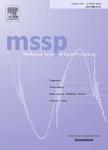版权所有:内蒙古大学图书馆 技术提供:维普资讯• 智图
内蒙古自治区呼和浩特市赛罕区大学西街235号 邮编: 010021

作者机构:Univ Sheffield Dept Mech Engn Dynam Res Grp Sheffield S1 3JD S Yorkshire England
出 版 物:《MECHANICAL SYSTEMS AND SIGNAL PROCESSING》 (机械系统与信号处理)
年 卷 期:2022年第167卷第PartB期
页 面:108519-108519页
核心收录:
基 金:UK Engineering and Physical Sciences Research Council [EP/R006768/1, EP/R003645/1, EP/R004900/1] EPSRC [EP/R003645/1, EP/R006768/1] Funding Source: UKRI UUI [EP/R004900/1] Funding Source: UKRI
主 题:Heterogeneous transfer learning Kernelised Bayesian transfer learning Sparse Bayesian classification Population-based structural health monitoring
摘 要:Data-driven approaches to Structural Health Monitoring (SHM) generally suffer from a lack of available health-state data. In particular, for most structures, it is not possible to obtain a comprehensive set of labelled damage data - even covering the most common damage types - due to impracticalities and economic considerations in observing the structure in a range of damage states. One solution to this problem is to utilise labelled data from a set of similar structures. The assumption is that, as a population, the group may have a shared label set that covers a wider range of damage states, which can be used in labelling a different structure of interest. These goals, producing a model that generalises for a population of structures, and transferring label information between structures, are part of a population-based view of SHM - known as population-based SHM (PBSHM). By considering data from a population, it is possible to make data-driven SHM practical in industrial contexts beyond unsupervised learning, i.e. novelty detection. In order to realise the potential of PBSHM, this paper applies a heterogeneous transfer learning method - kernelised Bayesian transfer learning (KBTL) - which is a sparse Bayesian method that infers a discriminative classifier from inconsistent and heterogeneous feature data, i.e. the dataset from each member of the population may refer to different quantities in different dimensions. The technique infers a shared latent space where data from each member of the population are mapped on top of each other, meaning a single classifier can jointly be inferred that generalises to the complete population. As a consequence, label information can be transferred in this shared latent space between members of the population. The ability to infer a mapping from inconsistent and heterogeneous feature data make the approach a heterogeneous transfer learning method. To the best of the authors knowledge, this is the first time a heterogeneous transf